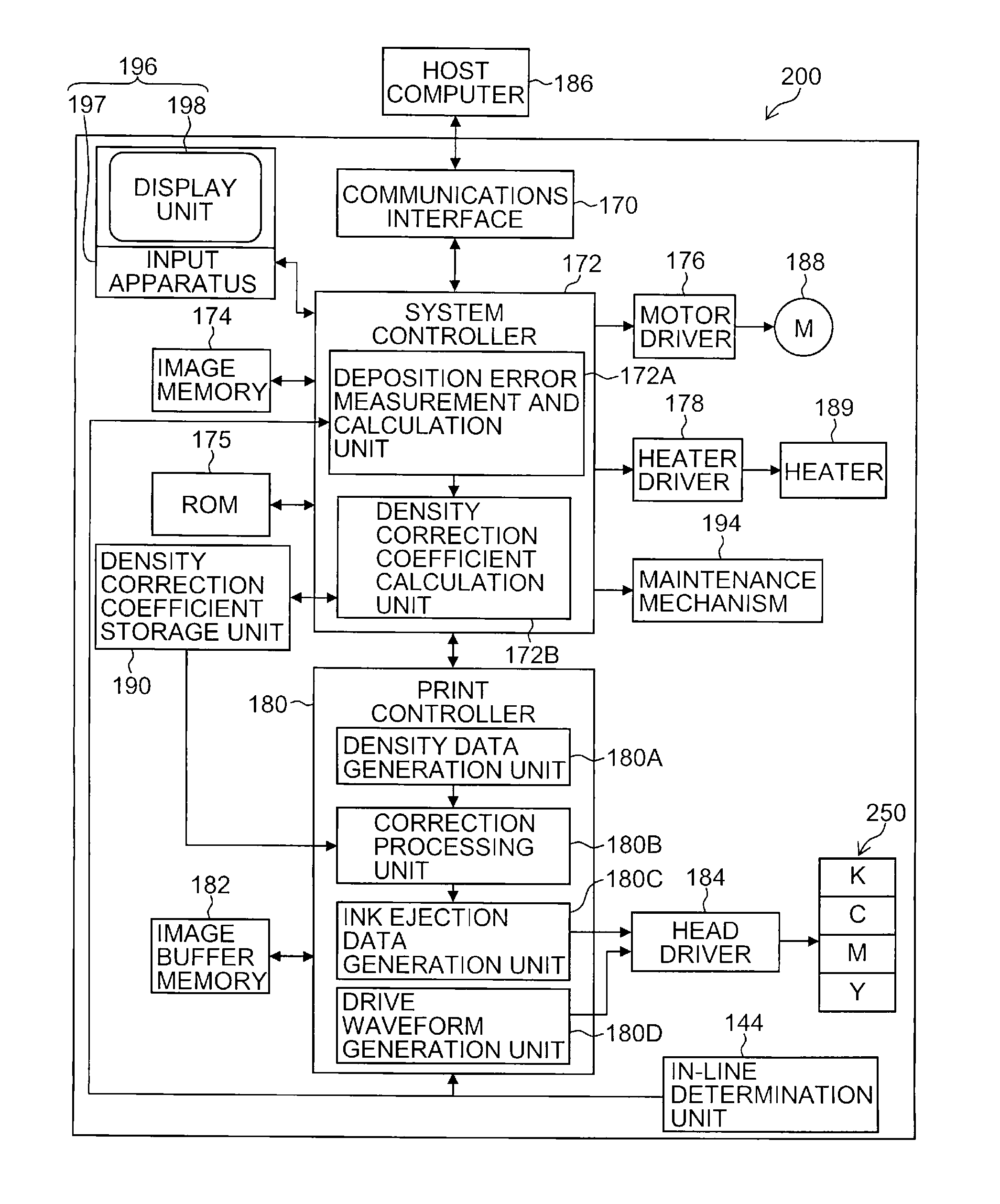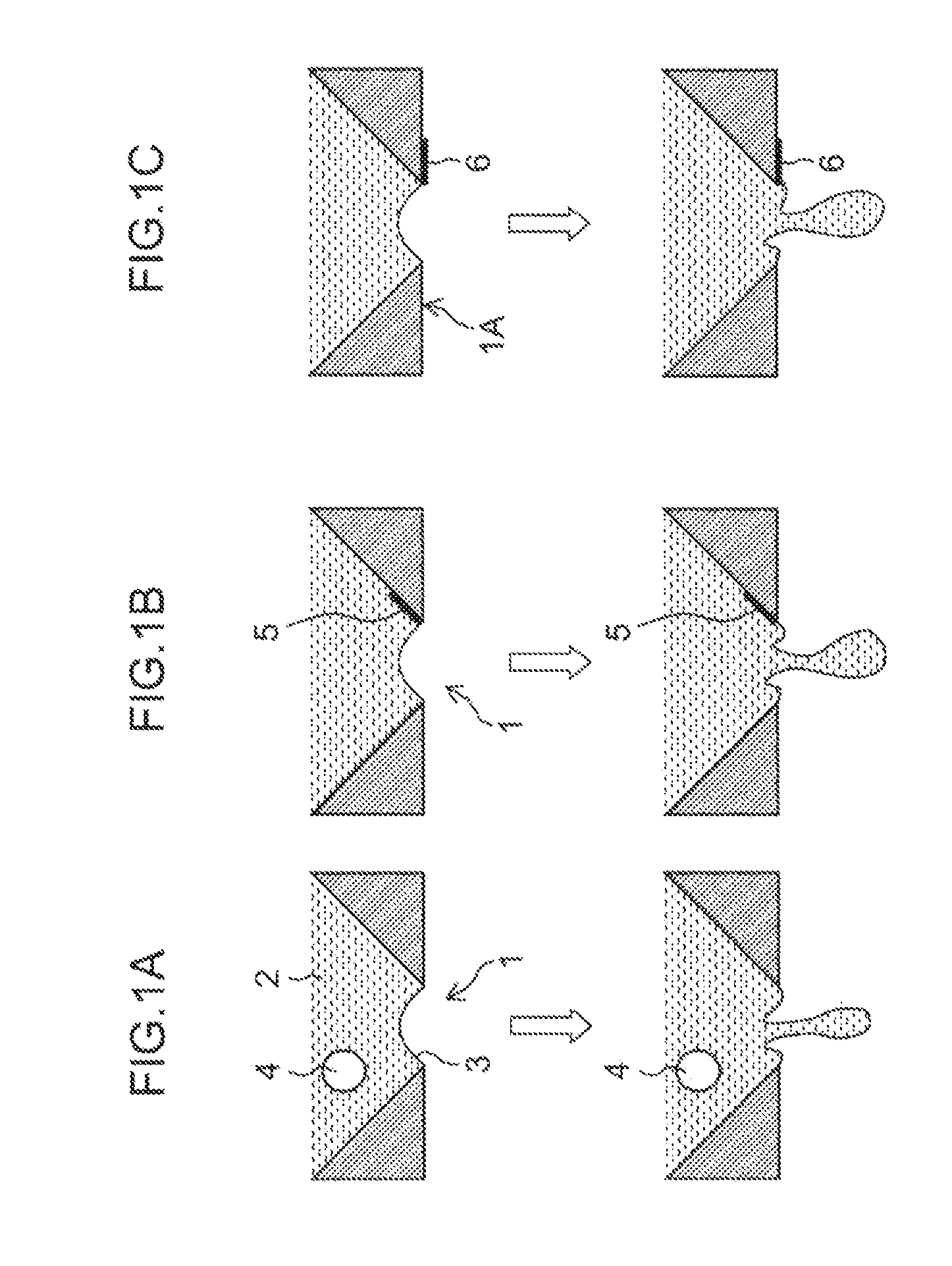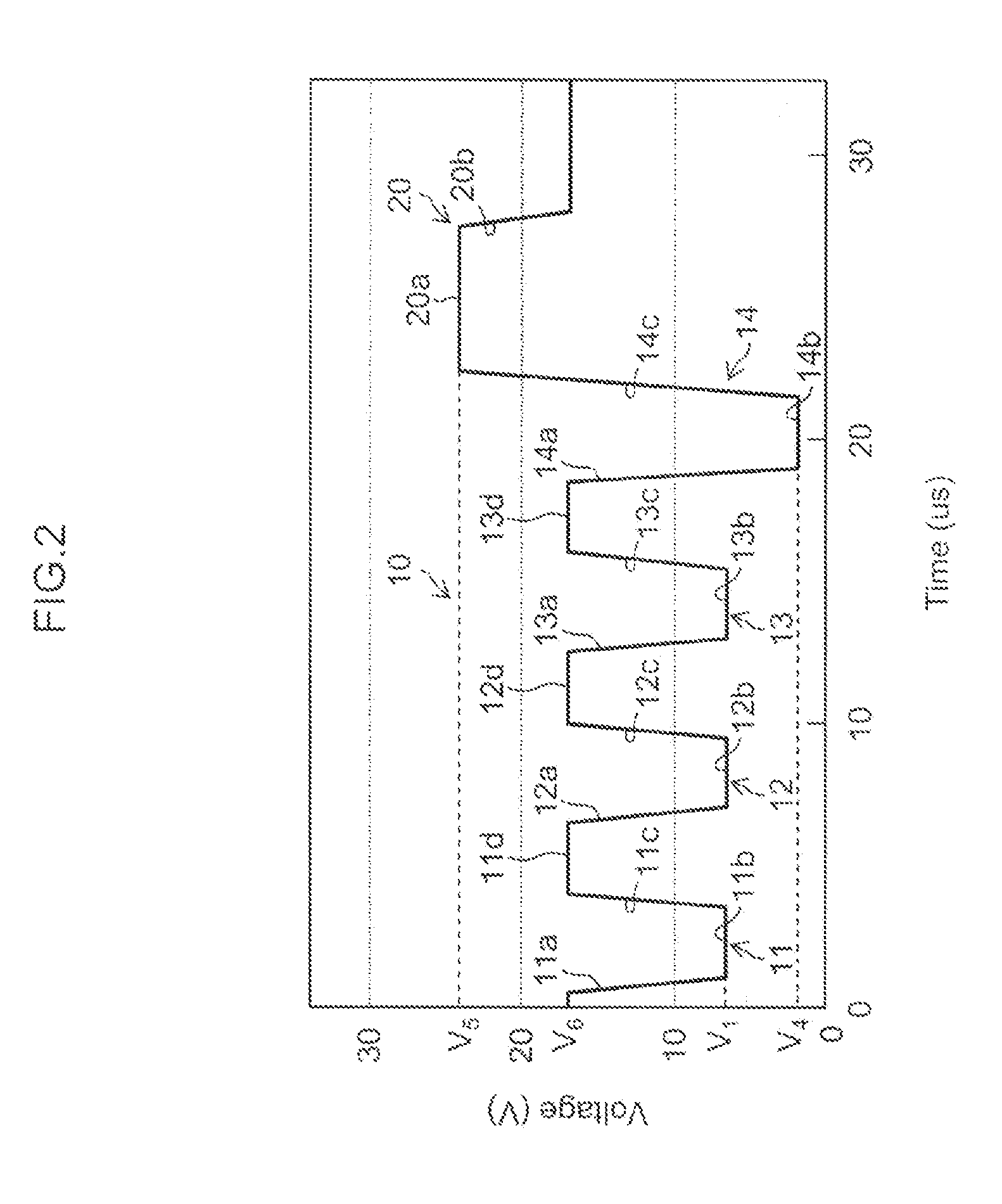Inkjet recording apparatus and method, and abnormal nozzle determination method
a recording apparatus and nozzle technology, applied in the direction of printing, other printing apparatus, etc., can solve the problems of reducing throughput, taking time for the determination process, and reducing throughput, so as to achieve both recording stability and throughput.
- Summary
- Abstract
- Description
- Claims
- Application Information
AI Technical Summary
Benefits of technology
Problems solved by technology
Method used
Image
Examples
modification example
[0351]In the embodiment described above, an inkjet recording apparatus based on a method which forms an image by ejecting ink droplets directly onto the recording medium 114 (direct recording method) was described, but the application of the present invention is not limited to this, and the present invention can also be applied to an image forming apparatus of an intermediate transfer type which provisionally forms an image (primary image) on an intermediate transfer body, and then performs final image formation by transferring the image onto recording paper in a transfer unit.
[0352]Furthermore, in the embodiments described above, an inkjet recording apparatus using a page-wide full-line type head having a nozzle row of a length corresponding to the full width of the recording medium (a single-pass image forming apparatus which completes an image by a single sub-scanning action) was described, but the application of the present invention is not limited to this and the present invent...
PUM
 Login to View More
Login to View More Abstract
Description
Claims
Application Information
 Login to View More
Login to View More - R&D
- Intellectual Property
- Life Sciences
- Materials
- Tech Scout
- Unparalleled Data Quality
- Higher Quality Content
- 60% Fewer Hallucinations
Browse by: Latest US Patents, China's latest patents, Technical Efficacy Thesaurus, Application Domain, Technology Topic, Popular Technical Reports.
© 2025 PatSnap. All rights reserved.Legal|Privacy policy|Modern Slavery Act Transparency Statement|Sitemap|About US| Contact US: help@patsnap.com



